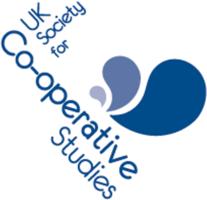| Open access |  | Co-operative peer review | Published online: Oct 2024 |
Eau de co-operation: An exploration of the essence of co-operative learning
Stacey Salt, Ali Longden
, and Amanda Benson
Vol 57 No 2, pp. 32-42
https://doi.org/10.61869/WKCG6689
How to cite this article: Salt, S., Longden, A., & Benson, A. (2024). Eau de co-operation: An exploration of the essence of co-operative learning. Journal of Co-operative Studies, 57(2), 32-42. https://doi.org/10.61869/WKCG6689
Abstract
At the Co-operative College we conducted action research to explore co-operative learning and what this means to others. Over a period of four months, some of our learners, members, College team, and participants from the further and higher education sectors all took part in a variety of interactive workshops using co-operative learning approaches. We used a qualitative research method to gather participant thinking, which was underpinned by a metaphorical framework: the art of distilling fragrances. Fragrances are created through the process of blending a variety of different ingredients (notes) that produce both range and depth; these top, base, and heart notes are distilled together to produce a unique fragrance. What is more, each fragrance profile is endlessly adaptable, changing its character through time, space, and context. Co-operative learning too is built on a blend of ingredients, such as individual and co operative values, lived experience, and a range of participatory learning theories. The findings suggested that top notes happen before the learning takes place, while heart notes occur during learning, and the base notes come about after the learning process. Equally, throughout the whole learning process it became clear that for co-operative learning to be effective, each stage is blended through common themes which were identified. Analysis of the data collected identified that six consistent learning influences are present within the top, heart, and base notes of learning, namely social, environmental, equitable, cultural, behavioural, and developmental influences.
References
Bates, B. (2019). Learning theories simplified: … and how to apply them to teaching (2nd ed.). Sage Publications.
Brown, J. (2022, May 16). What are fragrance notes? I Love Cosmetics. https://www.ilovecosmetics.co.uk/blog/what-are-fragrance-notes/
Bryman, A., Clark, T., Foster, L., & Sloan, L. (2016). Social research methods (6th ed.). Oxford University Press.
Cohen, L., Manion, L., & Morrison, K. (2007). Research methods in education (6th ed.). Routledge. https://doi.org/10.4324/9780203029053
Co-operative College. (2022). Co‑operative College 2022‑2025 Strategy. https://online.fliphtml5.com/fvtxh/ydxc/?1657702076293#p=1
Cormier, D. (2008). Rhizomatic education: Community as curriculum. Innovate: Journal of Online Education, 4(5), Article 2. https://nsuworks.nova.edu/innovate/vol4/iss5/2
Davidson, N. (2021). Introduction to pioneering perspectives in cooperative learning. In N. Davidson (Ed.), Pioneering perspectives in cooperative learning. Theory, research, and classroom practice for diverse approaches to CL (pp. 1-16). Routledge. https://doi.org/10.4324/9781003106760-1
Denscombe, M. (2017). The good research guide: For small‑scale social research projects. (6th ed.). Open University Press.
Freire, P. (1972). Pedagogy of the oppressed. Penguin.
Hadfield, M. (2019, June 11). Making co-operative citizens: A century of learning collaboration. Co‑operative News. https://www.thenews.coop/making-co-operative-citizens-century-learningcollaboration/
hooks, b. (2009). Teaching critical thinking. Practical wisdom. Routledge. https://doi.org/10.4324/9780203869192
International Co-operative Alliance. (2015). Guidance notes to the co‑operative principles. https://ica.coop/en/media/library/the-guidance-notes-on-the-co-operative-principles
Kline, N. (2009). More time to think: A way of being in the world. Fisher King Publishing.
Lonergan, G. (2019). The origins of co-operative education. Journal of Co‑operative Studies, 52(1), 20-21.
Manet, E. (1880). Une botte d’asperges [Painting]. Wallraf-Richartz-Museum & Fondation Corboud, Cologne, Germany. https://www.wallraf.museum/en/collections/
Mollick, S. (2021). Relevance of educational thoughts of Paulo Freire. International Journal of Research Publication and Reviews, 2(7), 318-322.
Noble, M., & Ross, C. (2020). Bundling co-operative higher education: Towards a theory of co-operative learning. Journal of Co‑operative Studies, 53(3), 25-29.
Noffke, S., & Somekh, B. (2005). Action research. In B. Somekh & C. Lewin (Eds.), Research methods in the social sciences (pp. 89-96). Sage Publications.
Nweke, C. C., & Owoh, A. T. (2020). John Dewey and Paulo Freire: Comparative thought on experiential education. Nnadiebube Journal of Philosophy, 4(1), 98-109.
Oxford English Dictionary. (n.d.). Co-operative. In Oxford English Dictionary. Retrieved August 5, 2024, from https://www.oed.com/
Pring, R. (2000). Philosophy of educational research. Continuum Books.
Sherrington, T., & Caviglioli, O. (2020). Teaching walkthrus: Five‑step guides to instructional coaching. John Catt Educational Ltd.
Visser-Wijnveen, G. J., Van Driel, J. H., Van der Rijjst, R. M., Verloop, N., & Visser, A. (2009). The relationship between academics’ conceptions of knowledge, research and teaching — a metaphor study. Teaching in Higher Education, 14(6), 673-686. https://doi.org/10.1080/13562510903315340
Wenger, E. (1998). Communities of practice: Learning as a social system. Systems Thinker, 9(5), 2-5. https://thesystemsthinker.com/
Werdelin, J., & Howard, D. (2021). The beginner’s guide to co‑operative learning: Make your learners your main teaching resource. Crown House Publishing.





